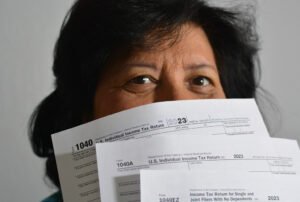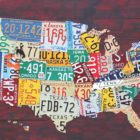
Editors’ note: In this interview, Cindy M. Lott, who has worked with the state charities regulation and enforcement community for many years and who is now also working with the federal regulators, discusses the overall regulatory landscape of nonprofits. Lott sees a shift occurring at both the state and federal levels, with a new balance in the process of being struck—particularly in light of changing priorities and subsequent resource allocation at both levels of government. She views this shift as a harbinger of further change in the nonprofit sector.
Lott approaches the field from various perspectives, as she has held a unique set of positions in her career. She developed and ran the Charities Regulation and Oversight Project at Columbia Law School for over a decade, which focused on state charities officials, and is now developing a new program at the Urban Institute’s Center on Nonprofits and Philanthropy that addresses the overall regulatory framework for the charitable sector, state and federal. Lott has been at the intersection of regulators, academics, and practitioners in the nonprofit sector—having served in each of those capacities over the last two decades—and has worked to bring all of them together to make visible regulatory challenges in the field. In addition to her new position as director of nonprofit management programs at Columbia University’s School of Professional Studies, she just completed her first term on the IRS Advisory Committee on Tax Exempt and Government Entities (ACT); this year’s report, released on June 8, is replete with recommendations—not only for the IRS, but also for the sector as it evolves in its working relationship vis-à-vis regulators.1
This article is from the summer 2016 edition of the Nonprofit Quarterly magazine, “The New Nonprofit Regulatory Environment: What You Should Know.”
Ruth McCambridge: Cindy, let’s talk about what the landscape of nonprofit regulation and enforcement has looked like over the past ten years, because there have been some shifts. We know that regulation may be uneven from one state to another, but the relationship between the states and the IRS has also been changing.
Cindy Lott: Agreed. Some prefatory comments to lay a bit of groundwork for our discussion: First, there exist many misconceptions about charities regulation at the state level, most of which I attribute not only to a lack of empirical data but also to the very nature of state regulation in this field, which is more complex than most sector participants realize.
Second, as a baseline for discussing—and, more important, addressing—improvement in our sector’s regulation, we have to recognize that we have a federalist system. No different from other sectors, the layers of regulation in the charitable sector—as well as the intersections of jurisdiction among the states and other federal agencies and local governing bodies—compose a 3-D matrix, if you will. States get to decide on their own what it is that they want to do in terms of regulation and enforcement of nonprofits—and even those priorities and decisions may change with the coming and going of state officials. They have their respective opinions about how many resources they’re going to put into nonprofit regulation and how they are deployed and in conjunction with what. I have often said it is not the case that there are states that just don’t do regulation and enforcement of nonprofits—but it can certainly look quite different from one state to another.
Much of what is being done vis-à-vis state enforcement is done very quietly in this sector. State officials are not necessarily trying to put an organization out of business or make others doubt its effectiveness; they’d almost always rather help improve it and let it continue on with its mission if there is a low-key way to have that happen.
And therein lies the tension: not everything regulators do is going to become a lawsuit or reach the media—although problems are much more likely to be heard in the media than they are in court. So, as a result, in this sector more than perhaps other sectors, we don’t know the true extent of enforcement.
In research conducted by Columbia University and the Urban Institute’s Center on Nonprofits and Philanthropy, we tried to establish a baseline of what state charity offices and regulatory systems look like.2 One of the things that we asked about were enforcement mechanisms, and we found that the most frequent enforcement mechanisms by far are letters and phone calls to nonprofits from state regulators or enforcers when they think that something may be wrong.
As for how problems are identified, whistle-blower complaints are one of the most frequent ways that state charity offices and other state enforcement mechanisms hear about potential issues, because there are simply never enough resources to be completely proactive in this space. So, our state charities regulators rely on nonprofit staff, board members, donors, the media, and the public to alert regulators as to where there may be an issue.
The hope is always that the problem may be resolved after a few well-directed calls and/or letters to an entity that appears to have compliance issues. Is that a fallible system? Absolutely. Is it easy or even appropriate for a state attorney general or a secretary of state to put all of those instances of inquiries or warnings on their website? Probably not. So the upshot is, we simply don’t know the exact statistics on what types of enforcement—and what frequency of that enforcement—are being done state to state. But I can assure you from my years of working with all of the states, D.C., and even the territories—every jurisdiction is doing something.
That said, we definitely have states that tend to have more enforcement and also have more robust regulatory environments than others—and that can mean everything from carefully drawn charitable solicitation laws to actually thinking about adopting parts of uniform or model laws. There are a number of states that have recently revamped their laws, including New York, Delaware, and D.C. This reflects the reality that lately there has been much more going on in the charitable arena at the state level of regulation than in the past. The question for every state individually is how to build a comprehensive, effective approach to regulation with sometimes quite limited resources.
The states have an amalgam of issues that they have to deal with when we talk about charities law. It involves more than a half-dozen different areas of law—trusts, corporate, solicitations, governance, criminal, antitrust, transactional, conservation easements, et cetera—and that’s why it can be tough for a state office to staff these matters unless you have an entire charities bureau to make sure that you have a comprehensive take on the landscape. For state attorneys general, for example, their bread-and-butter work—and a major priority—is consumer protection. And while there is a whole debate in the field about whether we actually want to view donor dollars as consumer dollars, when you’re looking at the rubric of an enforcement office it may be that the easiest way for state officials to think about deploying resources is to see it as an extension of consumer protection in some ways.
We do have thirteen states that have dedicated charities bureaus, but most states don’t.3 Those states without dedicated bureaus are pulling skill sets and resources from various parts of their offices and putting them all together depending on what type of case they have. This model is very similar to how law firms used to staff nonprofit or charitable matters until many larger firms introduced formal practice groups for this work.
RM: But it must be hard to keep all of those strands together and advancing unless you have them coordinated out of one place.
CL: Not having a dedicated charities bureau in a state does not mean there isn’t a point person or attorney who serves as the lead on these matters. In fact, this was a major goal of the Charities Regulation and Oversight Project at Columbia Law School over the past decade: to raise awareness within some of the less active and/or resourced states such that every state would build capacity for this work. We also developed resources for states to help them institutionalize their regulatory and enforcement training and outcomes. I think the states have made huge headway on this and recognize the importance of this sector in a manner that may not always have been the case; just this year, the state attorneys general collectively created a new standing committee on charities regulation and enforcement within the National Association of Attorneys General. In reality, however, the ability to execute regulation and enforcement is a budget issue for each state, so it is best to think about it as recognition plus resources.
Now is a particularly appropriate time for states to take up the two questions of recognizing the importance of the sector within their states and providing resources for regulation and enforcement, as the IRS is going through its own changes on these same two fronts. This will be an interesting discovery process, because the states and the IRS as enforcement sites have existed in parallel universes for a very long time, with a lack of information sharing between the IRS and the states.4 If there is to be an effective regulatory framework of any sector in a federalist system, the states and the feds have to be able to communicate and execute their respective roles in what I call “interlocking jurisdiction.”
RM: The lack of information sharing between the IRS and the states is legendary.
CL: Well, it certainly has been a one-way valve. The states can always refer a case to the feds, but the feds can’t refer the other direction. What we’re seeing now at the IRS is a greater focus on the tax administration aspect of its role. The audit numbers at the IRS for the exempt organizations area are at an historic low. We are also seeing, with the advent of 1023-EZ, that the IRS has determined itself to be less of a gatekeeping function.5 And, with its commitment to digitize and make publicly available the information it receives electronically, we are seeing a greater sharing of what information the IRS does collect. Taken together, this means that the IRS may not have as much information on an entity at the beginning of its life cycle, and the entity is likely never to be audited, but whatever information it gives to the IRS will now be in the public domain. Per its commitment of last year, in June of this year the IRS began to release digitized Form 990 information it has received from the nonprofit sector. And this is what states must now consider in determining where they will allocate resources for their own data collection from exempt entities, revamping their state laws, and dedicating personnel to educational as well as enforcement efforts.
Now, here comes the shift. While the IRS has reallocated its own resources due to changing priorities, the states happen at the same time to have been working on what is known as the Single Portal Initiative (also called the Single Portal Multi-State Charities Registration project). The goal is to enable a technological platform that will make it easier for the sector to provide information that is required at the state level.6 In addition, the Single Portal platform will import the 990 data for an entity and populate the platform with that data. The 990 is going to remain extraordinarily important as a data source for regulators, but we also now have the states actively saying, “We need a better system of regulation and enforcement, and we’re willing to try to help build it ourselves.”
More important, the states are undertaking a mapping exercise to try to figure out, state to state, what information is asked of entities. The states are considering: Why do we collect this information? What do we do with this information? Is it really useful? Do we make public all that we require for compliance? In previous times, more data was always considered a good—and in this sector, even a public good. With cybersecurity and privacy concerns, data may now also be considered a liability. More and more, we see in many sectors the mantra of, “Collect only what you use and can secure.” The nonprofit sector is no different.
It has been assumed that the government, as a sector, would be the correct repository of all of this information—and that may remain true; but which part of the government is another matter. The states are becoming more consciously active in this area at the very time the IRS has moved to an emphasis on tax administration.
So, there are shifts happening within our federalist system; and, again, what was happening at the state and federal levels was occurring independently of each other, but the two shifts are now dovetailing for a new regulatory reality. The IRS is doing its own rethinking about issues that have been going on for some time; and in the very same decade, the states were starting to become much more aware of what each other was doing. It just so happens that now those two trajectories are, I believe, intersecting. And that will change how people think about the balance of regulation of nonprofits.
RM: Well, it’s interesting, because I think that there has been some feeling for years that there were a lot of problems wafting about that nobody was picking up on unless the media exposed them—and sometimes not even then. The IRS wasn’t following up on them, and it wasn’t clear that the states were following up on them. And, in some cases, the problems extended beyond state borders; so they were problems that existed in a number of states, but nobody was coordinating any action against them. But the cancer charities fraud case was an exception. Could you talk a little bit about the importance of that development in all of this? I think it’s almost emblematic of what it is that you’re talking about.7
CL: Yes, I am on record as saying that I think the cancer charities fraud case reveals the good, the bad, and the ugly of where regulatory activities are right now in the nonprofit arena.
Sign up for our free newsletters
Subscribe to NPQ's newsletters to have our top stories delivered directly to your inbox.
By signing up, you agree to our privacy policy and terms of use, and to receive messages from NPQ and our partners.
First, let’s remember that it took an excruciating four years to resolve even this particularly egregious case in which there was no gray area. Even in such an extreme situation, it took that long because the states had to share data in rudimentary ways and chase information down independently. That is where the Single Portal project, I think, is going to be incredibly helpful and a real tool for the enforcement community, where it is much needed as a data-sharing platform.
The legal complaint in the cancer charities fraud case is also a revealing primer on jurisdiction among the states and also vis-à-vis the feds—which in this case was the FTC.8 Anyone reading the complaint will see the array of the different state laws, and you’ll also note that in some states only the secretary of state had jurisdiction over X, Y, and Z, as opposed to the AG’s office. Long story short, the states don’t all have the same jurisdiction by a long shot. So, these kinds of multistate collaborations help states also think through what they want their laws to look like, what they want to enforce, and who in each state should have the resources to do X, Y, and Z. The case was not only an example of what could be done collectively by the states and feds but also shone a light on some jurisdictional gaps. It was an example, too, of how painfully long it can take to investigate and litigate a multistate case that, ultimately, was pretty black and white.
RM: Yes. And this is may be a hugely important point, because when you look at cases that do seem egregious, and the movement on them is so slow, it can feel like there are in fact no consequences—or the consequences can come so late and be so minimal that it almost feels like, why bother? But, it sounds to me like what you’re talking about is something that’s headed in another direction. Do you think that there is general agreement among the states and—this is probably a difficult question—among the state attorneys general to actually work in this more coordinated way?
CL: Absolutely. But the states have always worked in coordinated ways to some extent. It’s very common in antitrust cases, in consumer cases, all sorts of cases like that. Litigation models abound at the state level and among state AGs, and even secretaries of state or other state agencies that get involved in various multistate types of cases. Sharing information among states on a legal matter is one aspect, but coordinating an enforcement action is a whole other matter, requiring a huge amount of resources. That is true for any enforcement action.
But to your earlier question of what the status of regulation and enforcement is in the nonprofit arena: even when it looks quiet on the surface, that doesn’t mean that there isn’t an immense amount of activity going on under the surface at the state level. It’s just that through the data-collection process and having to do the analytics around it, it has been a painfully complicated process, and slowed by a lack of technology and resources. The Single Portal project will help further a situation where the state regulators will be only one of a number of accountability bodies. All of the data will be public, so anybody—the media, academics, anybody—can take that data and mash it up and do whatever they want with it for their own purposes.
RM: That’s amazing. That’s like the Chicago open data project [Citizens Police Data Project] on police violence. It allows citizens and media to do their own investigations.
CL: It’s all part of the open data movement, but it also means that the regulators can have their own algorithms on their own back page, too. Open data brings much information to light—some of which may not always be flattering to the sector, especially one dependent on the trust of the public. A lot of money flows through this sector, and where there is money, you’re going to have a certain percentage of fraud. Those folks who look to take fraudulent advantage of others are indifferent to where they find their nefarious opportunities, and our sector may be particularly appealing to them, given the general lack of resources for enforcement. The more the public, the media, academic researchers, and the regulatory community know about our nonprofit sector, the more patterns can be analyzed, correlations made, thoughtful and consistent regulation developed, and enforcement actions effectively and efficiently undertaken. The open data movement is not a friendly environment for those looking to commit fraud, so I say the sooner it comes to our sector, the better.
RM: It’s almost like you have to create the foundation for a more networked kind of approach. That’s really what you’re talking about.
CL: The networked approach you refer to is what we were helping to promote for the last decade at the Charities Project at Columbia Law School, by bringing the states together for trainings and policy conferences. Now we are doing something similar with the states and feds combined at the Urban Institute’s Center on Nonprofits and Philanthropy. The first step is to outline common understandings and challenges among jurisdictions, both state and federal, and then move into considerations of actively deploying resources. Some of the states, of course, have been having these conversations for years—and they have more robust regulatory regimes and simply have more resources dedicated to this sector. But with a multistate action, and one that involves a federal agency such as the FTC, there is a bigger intention at play. It is one message for a couple of the big states to go after an entity, but it’s another message altogether to have all fifty plus D.C. and the FTC coordinate.
RM: That’s what I thought was really extraordinary about that particular situation.
CL: We’re not sure if such an effort has ever happened in any sector—all fifty states plus D.C., plus the feds on any litigation matter. So, though I do understand the complaints in the field about the cancer fraud prosecution—that it took so long and the sanctions seemed so minimal to some observers—the reality is that the case served to lay a groundwork for future actions, and it was also the culmination, frankly, of years of the enforcement community talking and thinking and saying, “We need to be able to do better and do it collectively.” With technology that now exists, it is really incumbent upon government to better utilize resources and share resources, and that’s where we are headed now on multistate and fed–state interactions.
RM: Very interesting. So, along with that, when we last talked, you mentioned something that was very provocative about the idea of legal standing. Because if we’re going to make all of this information more and more accessible, what does that mean about who has standing to take action against a nonprofit? Where is the issue of legal standing now? Where would you expect it to go? There seems to have been a very narrow interpretation of who has standing to bring an action against a nonprofit in the past.
CL: Well, let me back up for one second to talk more about who can go after whom in this sector. We have a variety of federal agencies that can go after different aspects of nonprofit conduct. Then, we have the states, which are very much thinking about governance, nonprofit corporation law, trusts, and criminal jurisdiction, among other things. All of that theoretically interlocks, but there are still very limited resources in this space for dealing with regulation and enforcement in this sector, and little research to contextualize what regulators may be looking at.9 But the more that we have information out in the public domain and the more that we have technology to make information accessible, the more bodies there will be that can act on the information and the more completed investigations and enforcement we will see.
To date, as a matter of law, we’ve always had the state attorneys general, who historically have had legal standing to bring an action against an entity or a board.10 We’re now seeing, however, small pushes for other types of stakeholder standing. Occasionally, we see beneficiaries who say, “Wait a minute—I represent an interest that is not being brought by AGs for whatever reason.” And we see marginalized members of the board and donors who say this as well.11 And with more and more open data available, now these stakeholders are going to have new and better tools for making their case. This is what is new and different in our particular sector.
Other sectors have shareholder actions, class actions, individual rights to action. If resources are not dedicated to enforcement personnel at the state and federal level in the nonprofit sector, and with the rising tide of data available publicly—which makes more evident some of the enforcement gaps—I predict pressure will build to allow other forms of standing to bring an action, even in limited form, akin to qui tam actions in other areas of the law. Some of my legal colleagues may view this as blasphemous, given our centuries-old standing laws, but note that I am not advocating the change. I am merely noting what may be a natural outcome of the current trajectory of an underresourced enforcement community intersecting with a wealth of publicly available data. We may very well find in the near future that donors and beneficiaries who have access to information about where these billions of dollars are going may, in fact, decide that they would like a say when they believe something goes off the rails.
RM: The case at Sweet Briar College seemed to contain that dynamic.12
CL: Yes, and we’ve had other instances where people want to bring a class action.13 I think that we’re going to see some really novel actions—well, they’re not novel in other parts of our legal system, but they may be novel to this sector.
For better government regulation, it is time to look more pointedly at resources, research, and coordination, and to compare our sector to other fields and regulators—for example, financial regulation or healthcare regulation, the SEC, or even the FEC. We’ve simply not had as much recognition of the need for regulation and enforcement in some ways for our sector, which means we’re never going to get the resources. This is why many of us advocate for more research in the field—to build upon that done by academics and researchers in the past but also to research specifically the regulatory issues. Even if this reveals some ugly truths at times, we need the data and the empirical evidence so as to be able to go to policy-makers and say, “This is what this sector looks like in real life and numbers, not just anecdotally.”
RM: Right. So, basically, you’re saying that what is occurring out there is, number one, we still don’t have a baseline to use almost as a guide to where to look for enforcement; and that does not exist because we don’t have the research. Regulators are going essentially by their own experience and by their own records about what matters and what doesn’t, and are often alerted to problems only by a stakeholder coming forward to complain. The states are, in fact, beginning to look at some collaborative activity that would, in concert with more research, begin to provide a more systematic way of looking at regulation and enforcement. And, two, at the same time, we’re seeing the feds—specifically the IRS—pulling back a bit, both in terms of what they do and in terms of how they’re pulling back. I think our expectation of them as a major force is waning.
CL: Many people do not recognize that there are federal agencies besides the IRS that involve themselves in the charitable sector. The Federal Trade Commission, for instance, has always had people that have dealt with charities issues. These FTC attorneys know the states because they have involved themselves in these issues—even participating in some of our trainings—and they’ve been good colleagues. As always, it is a matter of, one, recognition that these issues are important and, two, deploying resources. The FTC did that with the cancer charities case, to their credit. To be clear, this is not the first time the FTC has had a relationship with the states. We’re hoping there will be some further steps and big-picture thinking about what these types of relationships can do in the future. The cancer charities case reminds the sector that the IRS is not the only federal agency with jurisdiction in this space—and that’s a good thing. We have an enforcement ecosystem, if you will—a regulatory and enforcement ecosystem—and this cancer charities case really showed that.
One of the other interesting developments occurring in this sector right now is that the layers of jurisdiction are becoming more apparent, including at the local level. We are seeing this in particular with the examination of the definition of charity.14 States don’t have to have the same definition of charity that the feds do, and now even local jurisdictions are staking a claim on defining charitable activities within their borders. And this is going to be one of the issues that come to the fore over the next few years.
RM: That is a very central question.
CL: A very central question. This gets us back to the start of our talk: we have a federalist system. On the one hand, every jurisdiction can determine its own requirements independent of the other jurisdictions; on the other hand, when one regulator alters requirements, it may necessitate other regulators to recognize those changes and take that into account for their own requirements.
RM: It’s so much more of a collective effort, by the looks of it.
CL: Well, it certainly is a multilayered effort—and sometimes, occasionally, it might be collective. Large policy questions abound: Should regulators employ collective efforts only sparingly, because, again, it is a federalist system? Are these collective efforts more efficient or less efficient? Do they homogenize requirements, or is it a useful leveling effect that brings consistency and predictability? What type and frequency of regulation and enforcement ultimately helps this particular and unique sector the most? These are not just fascinating academic questions; answers based on accurate empirical evidence will impact the charitable sector in fundamental ways never seen before.
Notes
- Amy Coates Madsen et al., “Stewards of the Public Trust: Long-Range Planning for the Future of the IRS and the Exempt Community,” in Advisory Committee on Tax Exempt and Government Entities (ACT): 2016 Report of Recommendations, IRS.gov, Forms and Publications, June 8, 2016, 89–156.
- Cindy M. Lott et al., State Regulation and Enforcement in the Charitable Sector, Columbia Law School’s Charities Regulation and Oversight Project and the Urban Institute’s Center on Nonprofits and Philanthropy (forthcoming 2016).
- Ibid. According to the forthcoming report, thirteen states have a dedicated charities bureau.
- For more specifics, see letter from the National Association of Attorneys General to the Honorable Max Baucus, Chairman, Committee on Finance, United States Senate, and the Honorable Orrin Hatch, Ranking Member, Committee on Finance, United States Senate, October 28, 2011; and see United States Government Accountability Office, Tax-Exempt Organizations: Better Compliance Indicators and Data, and More Collaboration with State Regulators Would Strengthen Oversight of Charitable Organizations, December 2014.
- National Association of State Charity Officials, “NASCO Submits Comment on Proposed Form 1023-EZ,” press release, May 1, 2014; and see Tim Delaney, “Express lane to more trouble for the IRS?” Congress Blog, The Hill, June 2, 2014.
- Multistate Registration and Filing Portal, Inc. (MRFP); and see National Association of State Charity Officials, “Single Portal.”
- Federal Trade Commission, “FTC, States Settle Claims Against Two Entities Claiming to Be Cancer Charities; Orders Require Entities to Be Dissolved and Ban Leader from Working for Non-Profits,” press release, March 30, 2016.
- FTC, 50 States, and D.C. v. Cancer Fund of America, Inc., et al., Complaint No. 2:15-cv-00884-NVW (D. Ariz. filed May 18, 2015).
- Cindy M. Lott et al., State Regulation and Enforcement in the Charitable Sector (forthcoming 2016). According to the research report, 53 percent of those who responded to the survey noted that the staff assigned to charity regulation in their offices/jurisdictions has remained the same since 2008. But the sector, meanwhile, has been continually growing. In the decade between 2003 and 2013, the number of registered nonprofits in the United States rose 2.8 percent; in 2013, approximately 1.41 million nonprofits were registered with the IRS; and see Brice S. McKeever, The Nonprofit Sector in Brief 2015: Public Charities, Giving, and Volunteering (Washington, DC: Urban Institute, October 2015).
- See, for example, Emily Myers, ed., State Attorneys General Powers and Responsibilities, 3rd ed. (Washington, DC: National Association of Attorneys General, 2013).
- See, for example, Jonathan Ellis, “Sons want accounting of how Schwan Foundation lost hundreds of millions,” Argus Leader, April 18, 2016.
- See, for example, Ruth McCambridge, “Codifying Governance Lessons Learned the Hard Way: Sweet Briar College’s New By-Laws,” Nonprofit Quarterly, May 31, 2016.
- See, for example, Dickson et al. v. Gospel for ASIA, Inc. et al., Complaint No. 5:16-CV-5027 PKH (D. Ark. filed Feb. 8, 2016). This class action suit was filed against a charity by donors claiming they had agreed to give only on the condition that 100 percent of their gift be used for a specified charitable purpose, and who later discovered that the full amount of the gift wasn’t used for the intended purpose.
- See, for example, Linda Sugin, “Politics, Disclosure, and State Law Solutions for 501(c)(4) Organizations,” Chicago-Kent Law Review 91, no. 3 (forthcoming) Fordham Law Legal Studies Research Paper No. 2768165: “The post-Citizens United explosion of (c)(4) political activity—and the federal government’s dysfunction—did not go unnoticed by the states. While the federal government was at an impasse, some states attempted to bridge the gap. Federal law determines tax exemption, but state law defines charitable and noncharitable nonprofit organizations and regulates their governance. If nonprofit organizations are operated to the detriment of the public interest, state attorneys general have the power to investigate and discipline them. New York and California have both attempted to address the same concerns about secret money in politics that led to the IRS scandal and proposed regulations.” See also Russell Blair, “As Budget Woes Grow, Some Want To Tax Yale’s Endowment,” Hartford Courant, March 22, 2016, www.courant.com/politics/hc-yale-endowment-tax -0323-20160322-story.html; and Evelyn Brody, “The 21st Century Fight Over Who Sets the Terms of the Charity Property Tax Exemption,” Exempt Organization Tax Review 77, no. 4 (April 2016).












